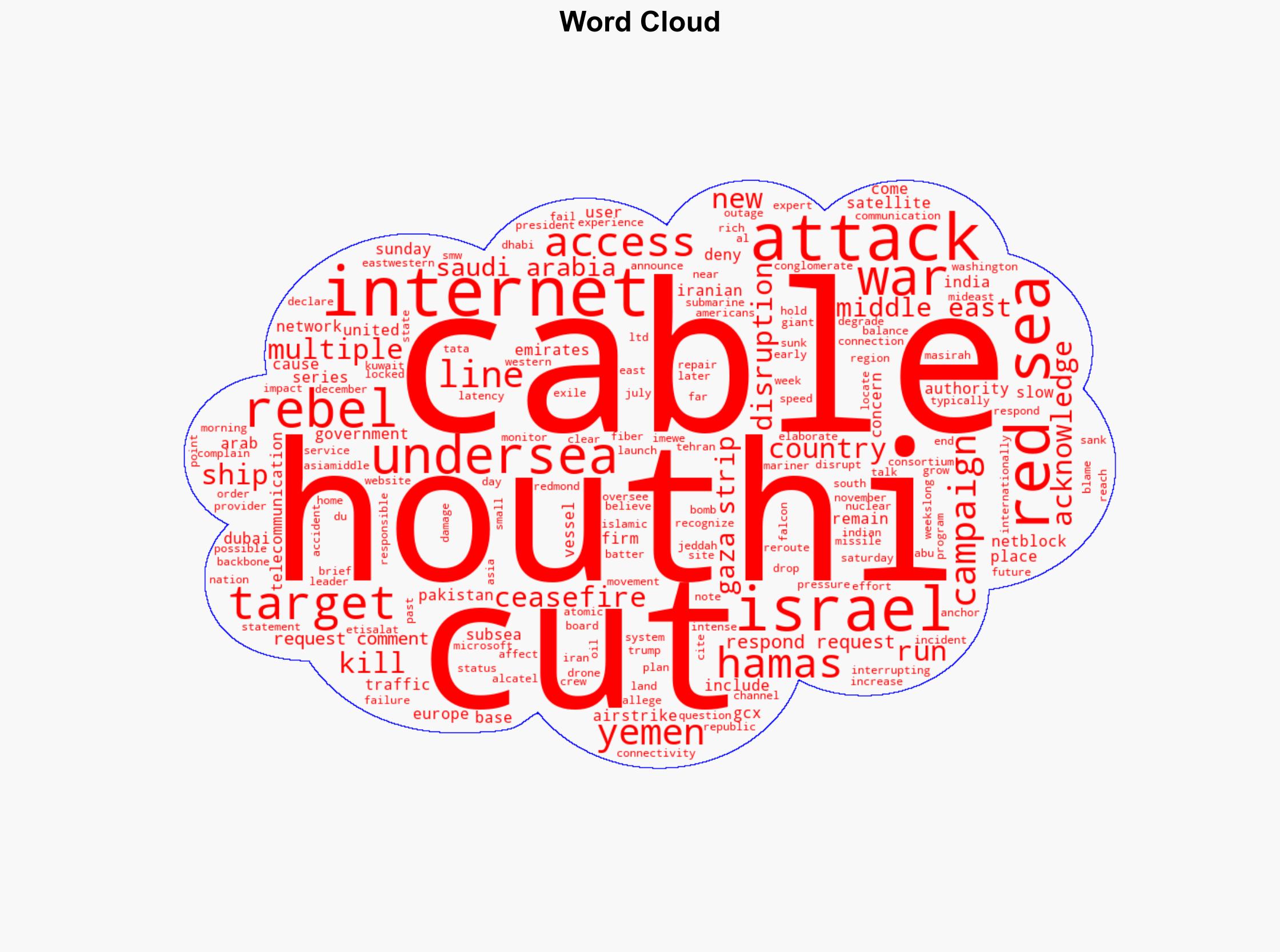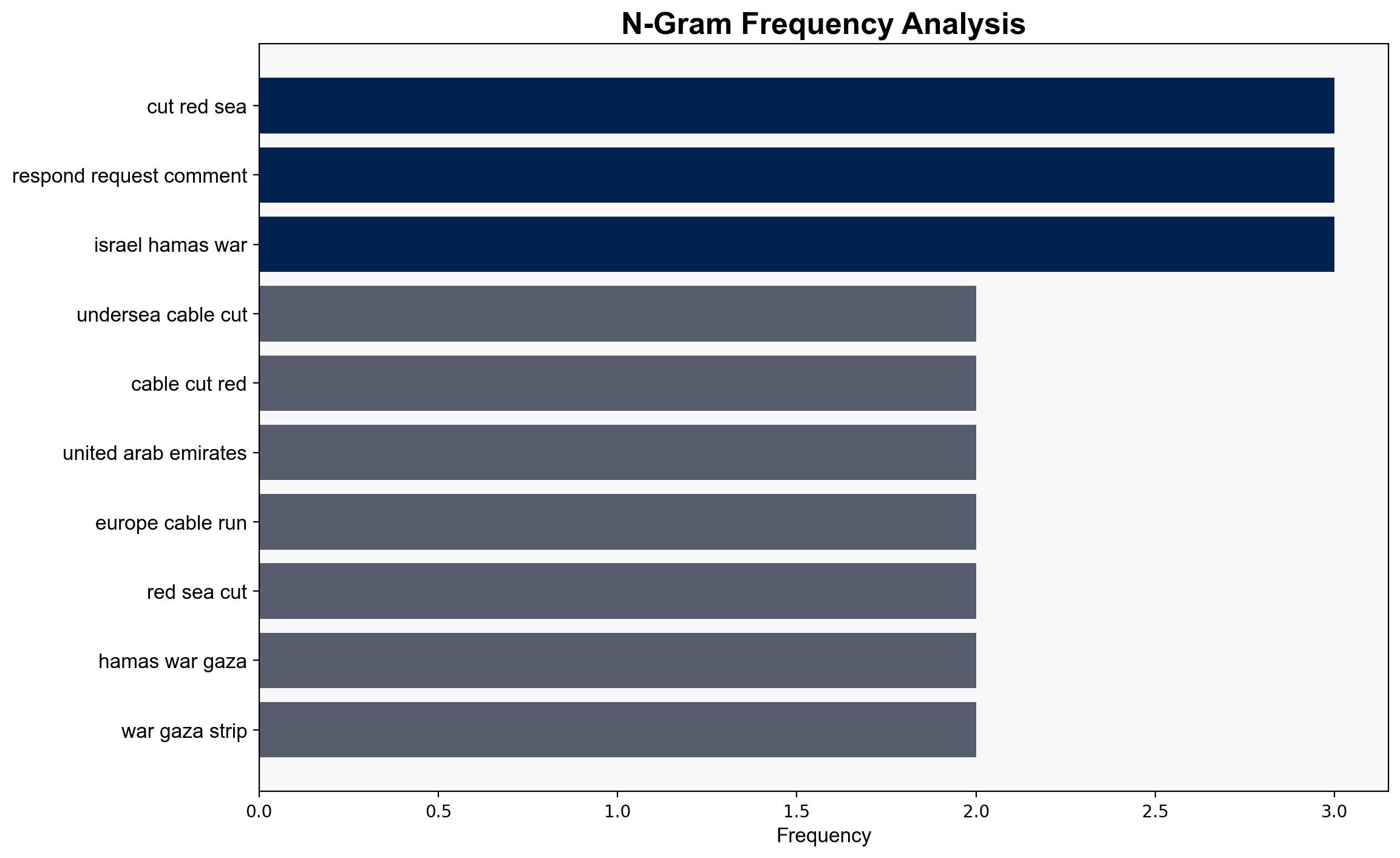Undersea cables cut in Red Sea interrupting internet in the region as concerns of Houthi attacks grow – New York Post
Published on: 2025-09-07
Intelligence Report: Undersea cables cut in Red Sea interrupting internet in the region as concerns of Houthi attacks grow – New York Post
1. BLUF (Bottom Line Up Front)
The most supported hypothesis is that the undersea cable disruptions in the Red Sea are likely due to accidental damage rather than deliberate Houthi attacks. Confidence in this assessment is moderate, given the lack of direct evidence linking the Houthis to the incident. Recommended action includes enhancing monitoring and protection of critical infrastructure in the region while maintaining diplomatic channels to address potential escalations.
2. Competing Hypotheses
1. **Hypothesis A**: The undersea cable cuts are the result of Houthi attacks aimed at pressuring regional adversaries amidst ongoing conflicts.
2. **Hypothesis B**: The cable disruptions are accidental, caused by maritime activities such as anchor drops or natural wear and tear, unrelated to any deliberate attack.
Using the Analysis of Competing Hypotheses (ACH) 2.0, Hypothesis B is better supported due to:
– Lack of direct evidence or claims of responsibility from the Houthis.
– Historical precedence of accidental cable cuts in busy maritime regions.
– Denials from Houthi sources and absence of any strategic gain from such an attack.
3. Key Assumptions and Red Flags
– **Assumptions**: Hypothesis A assumes a strategic motive for the Houthis to disrupt internet services, which may not align with their operational capabilities or goals.
– **Red Flags**: The absence of clear evidence or credible claims of responsibility for the attack raises questions about the attribution of the incident to the Houthis.
– **Blind Spots**: Potential underreporting of maritime activity in the area that could have led to accidental damage.
4. Implications and Strategic Risks
– **Economic Impact**: Prolonged internet disruptions could affect regional economies, particularly those reliant on digital services.
– **Cybersecurity Risks**: Increased vulnerability of critical infrastructure to both accidental and deliberate disruptions.
– **Geopolitical Tensions**: Misattribution of the incident could escalate tensions between regional actors and the Houthis, potentially leading to military responses.
– **Psychological Impact**: Heightened fear and uncertainty among regional populations regarding infrastructure security.
5. Recommendations and Outlook
- Enhance surveillance and protection measures for undersea cables, including real-time monitoring and rapid response capabilities.
- Engage in diplomatic dialogues with regional stakeholders to prevent misattribution and escalation.
- Scenario Projections:
- **Best Case**: Improved infrastructure security and regional cooperation prevent future incidents.
- **Worst Case**: Misattribution leads to military escalation and further infrastructure attacks.
- **Most Likely**: Continued vigilance and diplomatic efforts maintain stability, with occasional accidental disruptions.
6. Key Individuals and Entities
– **Houthi Rebels**: Denied involvement in the cable cuts.
– **NetBlocks**: Internet monitoring organization that reported on the disruptions.
– **Tata Communications**: Oversees the affected cable system.
– **Alcatel Submarine Networks**: Part of the consortium managing the cable infrastructure.
7. Thematic Tags
national security threats, cybersecurity, counter-terrorism, regional focus




